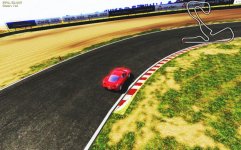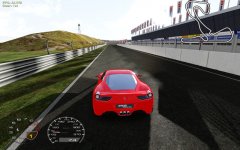I currently think the system used is rather limited.
It appears to try give light detail across a massively wide dynamic range, and as such, imo, fails to give sufficient realism.
Has anyone else played with the tone mapping method?
I'm currently trying to implement a 4 stops wide (4 EV) digital camera type system of tone mapping, but I'm a little unsure how it all works right now.
c=colour.rgb*exposure seems to give a linear representation...
...what we might see with an SLR camera, but I'm not sure. Contrast seems much higher and realism feels better. It also shows up issues with specular intensities (they become lots more powerful than may be ideal on most materials)
I'm thinking that we need a nicely calibrated ToneMap method that tries to copy a real cameras dynamic range, to even start to tweak materials in game (diffuse, ambient, specular levels etc)...
The logarithmic method "ToneMapHDR" seemed to be lacking realism. It gave a good presentation of the dynamic range of the scene, but it didn't feel all that real to me...
Hmmmm, just starting to tinker, but I'd like to maybe have a system where we have about 4 linear stops, then about 4 stops at each end that knee out (exponential) to black or white out, ending up close to the ~ 13 stops the human eye is capable of seeing at any given 'glance' of a scene...
The current system appears to be up to 25 stops wide, possibly more, and it just makes the scene feel flat some times! Specular in particular feel to just become very subtle with such a wide dynamic range squished into the 255 levels of intensity we ultimately have...
Hmmmmm
Dave
It appears to try give light detail across a massively wide dynamic range, and as such, imo, fails to give sufficient realism.
Has anyone else played with the tone mapping method?
I'm currently trying to implement a 4 stops wide (4 EV) digital camera type system of tone mapping, but I'm a little unsure how it all works right now.
c=colour.rgb*exposure seems to give a linear representation...
...what we might see with an SLR camera, but I'm not sure. Contrast seems much higher and realism feels better. It also shows up issues with specular intensities (they become lots more powerful than may be ideal on most materials)
I'm thinking that we need a nicely calibrated ToneMap method that tries to copy a real cameras dynamic range, to even start to tweak materials in game (diffuse, ambient, specular levels etc)...
The logarithmic method "ToneMapHDR" seemed to be lacking realism. It gave a good presentation of the dynamic range of the scene, but it didn't feel all that real to me...
Hmmmm, just starting to tinker, but I'd like to maybe have a system where we have about 4 linear stops, then about 4 stops at each end that knee out (exponential) to black or white out, ending up close to the ~ 13 stops the human eye is capable of seeing at any given 'glance' of a scene...
The current system appears to be up to 25 stops wide, possibly more, and it just makes the scene feel flat some times! Specular in particular feel to just become very subtle with such a wide dynamic range squished into the 255 levels of intensity we ultimately have...
Hmmmmm
Dave













